on color, charging, tariffs, hybrids, metallurgy, & more
Can color make companies more competitive. . .the surprising differences in charging emissions. . .why the EU and the UK may lose EV volumes. . .Ford finds hybrids still sell. . .AI comes to metallurgical inspection. . .Toyota Corolla Cross Hybrid. . .a 301-vehicle difference over nine months. . .
#Acura
Competing with Color
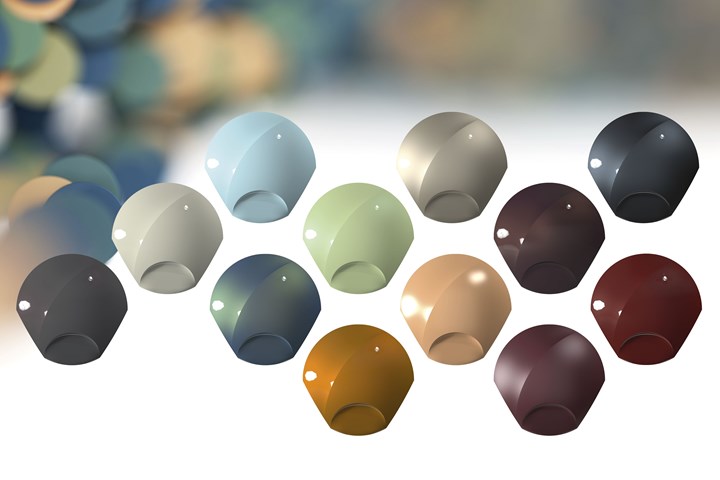
Colors from the BASF ‘On Volude’ collection. (Images: BASF)
Let’s say that you’re at a company that is really keen on producing vehicles that will put it—at the very least—in the conversation with Tesla.
The ordinary approach is to think of things like big batteries and large screens.
While range and digitalization are certainly key attributes, there is something that ought to garner more attention. Because it can be a notable differentiator.
If you go to the Tesla site and configure a vehicle, one of the things that can be considered deficient is the number of exterior paint colors.
And none of them is particularly imaginative.*
Which brings us to the 2023-2024 BASF Automotive Color Trends collection.
It seems that the BASF designers—who collate information from a variety of sources, ranging from fashion and consumer products to technology and nature—determined that the traditional automotive color wheel is no longer sufficient to capture the shifts that they foresee.
Rather than the conventional colors, they anticipate there will be lighter shades and non-classic hues. There are colors that are not typically automotive. There are colors that speak to functionality.**
In North America
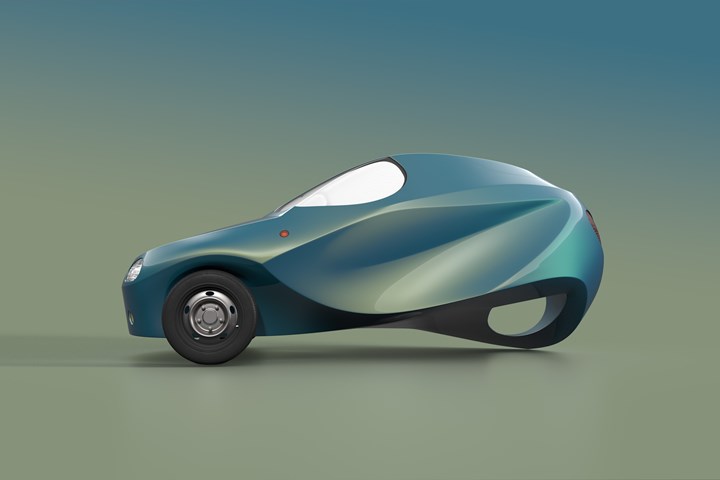
Liz Hoffman, head of BASF automotive color design for the Americas:
“In this year’s collection, red-leaning pastels and mid-tones are replaced by restorative yellow and green effects suggesting renewal. The connection complements both grounded color spaces and otherworldly escapes. It shows evolving mindsets in automotive design.”
In Asia-Pacific
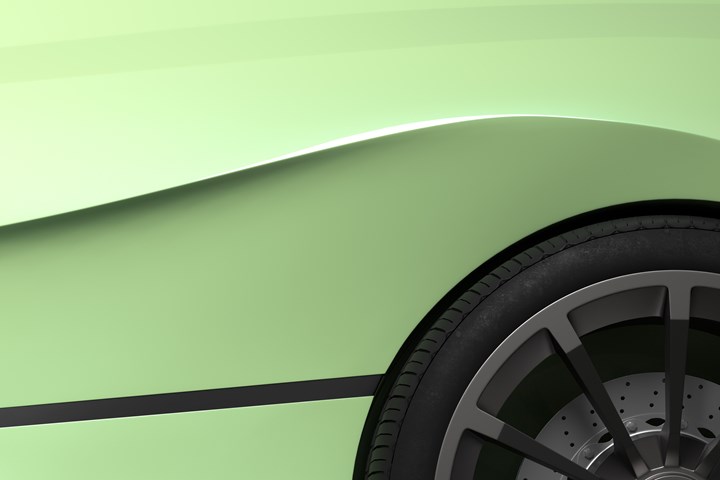
Chiharu Matsuhara, head of automotive color design for APAC:
“This palette can create amazing color harmonies that are futuristic, modern and playful interactions between color and effect combinations. These sustainable concepts are re-imagined in a more realistic way, boosting BASF’s leadership in sustainability.”
In Europe, the Middle East and Africa

Mark Gutjahr, head of automotive color design, EMEA:
“Expressive colors reflect our will to communicate and speak up. When we bring non-automotive colors into the mix, we broaden that conversation even further into new and exciting color spaces.”
Perhaps if you’re that person considering taking on the dominant competitor, the qualities of color may be an advantage.
==
*There is the availability of wraps for Teslas, but. . .
**One interesting aspect of the development of the colors for the collection that BASF calls “On Volude” is that a nontraditional approach was taken: “The colors were designed by humans who considered the possibilities raised by AI while creating their designs.”—Liz Hoffman, BASF’s Head of Automotive Design for the Americas.
///
Charging Considerations
Although some people are interested in electric vehicles because of the reduction in carbon emissions, some people are interested in the instant torque that the vehicles provide and really don’t care that there is no tailpipe.
For those who are in the first category, an app developed by Electricity Maps, a Danish firm, should be of interest.
It provides information about the carbon emissions associated with charging in various places and at various times so people can make better decisions about their charging regime.
There can be a swing of as much as 91% depending on time and place.
While you can’t move from one state to another (well, it is unlikely) in order to reduce charging emissions, timing does play a role.
But we wondered: what if everyone started going for the optimal time?
So we asked the folks at Electricity Maps:
“If everyone starts charging at the same time, yes, it could ultimately raise some challenges regarding the balancing of the grid (if volumes become significant but this is so far not the case with the penetration level of electric vehicles), however:
“It's already a challenge (and even worse) if you don't optimize charging and many people start charging when they get home in the evenings. It would create a consumption peak at the same time as the already existing consumption peak (everyone gets home, starts using electric appliances and cooking food, etc...).
“The optimal times when following an average carbon intensity are usually when renewable production is high and/or electricity consumption is low, which helps the balancing of the grid if more consumption is shifted to these times.”
Even if you don’t (yet) own an EV and are simply interested in things environmental, you’ve got to look at the Electricity Maps app because it is a rabbit hole with plenty of surprising information.
///
Additional EV Issue: Geopolitics
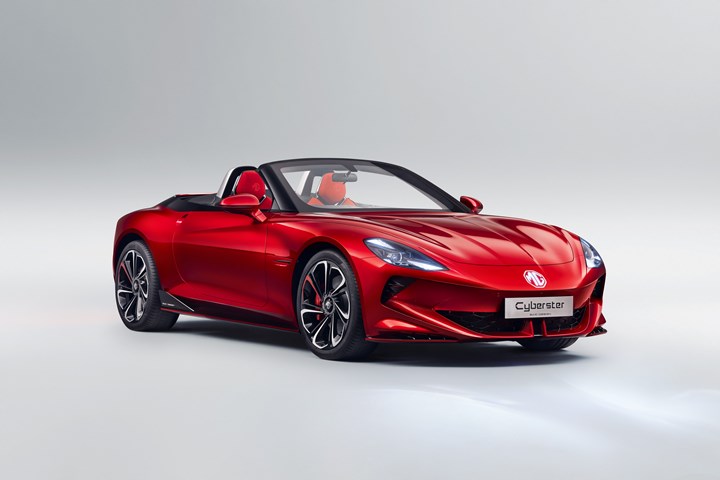
The MG Cyberster electric vehicle. The MG marque goes back to 1924 in the U.K. Today the company is owned by SAIC Motor Corp. of China. (Image: MG)
On January 31, 2020, the United Kingdom ended its membership in the European Union after being part of it for 37 years.
Apparently, Brexit hasn’t worked out so well for the finances of the people in the UK, as a recent YouGov poll has 62% of them saying it was a failure.
In just the few years since 2020 the automotive landscape on the east side of the Atlantic has massively changed, with EVs taking ever-larger portions of the market.
What’s more, Chinese companies have been increasing their imports to the EU and UK, which is giving serious concerns to those running OEMs based there.
They want to get as much volume as they can.
But it as of January 2024 there will be 10% tariff applied by the European Commission to EVs exported from the EU to the UK, thanks to “rules of origin” regulations.
The biggest rub is that for an EV the battery represents such a major part of the overall value of a given vehicle, and given that neither the UK nor the EU are exactly powerhouses of battery production right now, it isn’t unusual for the origin originating in the very place they’re trying to compete against.
This, of course, would not be an issue were the entities all part of the same bloc. Which came to a close on January 31, 2020.
(And you thought that developing EVs was about technology, not politics.)
How big a deal is this?
The European Automobile Manufacturers’ Association (ACEA) calculates:
- €4.3 billion is what it will cost EU EV builders exporting their vehicles to the U.K. over the next three years—and the U.K. is the EU’s biggest trading partner
- 480,000 EVs will be lost during this period—or the output of two average-sized assembly plants
Luca de Meo, ACEA president and CEO of Renault Group, put it:
“Driving up consumer prices of European electric vehicles, at the very time when we need to fight for market share in the face of fierce international competition, is not the right move – neither from a business nor an environmental perspective.
“We will effectively be handing a chunk of the market to global manufacturers.”
De Meo would like to maintain as big a chunk as possible because greater volume can lead to reduced prices.
But he also sees what’s happening with regard to the EU and China:
- ACEA stats have it that in 2022 500,006 Chinese-made cars were imported in the EU—63% of them were EVs
While the 2022 sales of Chinese EVs accounted for only 3.7% of total EU EV sales, in 2019 Chinese EV sales were 0.4% of the EU market.
Somehow squabbling with the U.K. over EV tariffs seem as a recipe for giving up more market share.
///
Hybrids: What Do Ford Customer Want?

The Ford Maverick Hybrid is rocking it—literally and figuratively. (Image: Ford)
In announcing its Q3 2023 sales last week, Ford noted that its EV sales were up 14.8%, a “best ever” 20,926 vehicles.
However, hybrid sales were up 41.4%, to 34,861.
Of that hybrid number, 12,311 were F-150 Hybrids, an increase of 46.9% over last year.
And the F-150 Lightning—the electric version—had Q3 sales of 3,503 units, a decrease of 45.8% compared with last year.
The Maverick pickup is available either as a conventional ICE or as a hybrid: 56.5% opted for the hybrid, or 13,521 units.
In addition to which, Ford noted, “Escape Hybrid and plug-in hybrid sales are overwhelmingly selling on pre-sold customer orders.”
Still Charged Up
With the investment it has, and continues, to make in EVs, Ford noted the Mustang Mach-E sales were up 42.5% for the quarter (14,842 units) and “F-150 Lightning is expected to produce sales increases in Q4 as capacity actions at the Rouge Electric Vehicle Center are realized.”
Still, it seems as though the customers are keenly interested in hybrids.
///
AI Comes to Bearing Metallurgy

Although this might resemble an image from the Hubble Space Telescope, it is actually the microstructure of a steel sample analyzed by an AI system developed by the Fraunhofer Institute for Mechanics of Materials. It was determined that the deep learning system does a better job of analysis than. . .people. (Image: Fraunhofer IWM)
Whether it is an internal combustion engine or an electric motor, a multi-speed transmission or a single-speed, there are bearings used in them.
And regardless of the propulsion system, there are also bearings in the wheels, steering system, pumps, and other applications.
All of which is to say that bearings are important (if not thought about a lot).
Roller bearings are typically produced with surface-hardened steels, with the surface hardening performed in order to prevent bearing failure. Surface hardening can be performed with quick cooling, which results in steel that is either martensitic or bainitic.
(Yes, now we’re going to get a little geeky about steel and bearings.)
Microstructures Matter
At the microstructure level it is important for the overall performance to know about the crystallites—non-metallic inclusions and larger-than-average grains—within the material.
Typically, the microstructural analysis is performed by metallographers. These people make visual inspections of the microstructures, looking for the larger grains or other flaws that could ultimately lead to bearing failure.
Researchers at the Fraunhofer Institute for Mechanics of Materials (IWM), in collaboration with Schaeffler Technologies (which produces bearings, among other things), looked into the performance of this expert examination (as in those human metallographers). . .and discovered that it was (a) error-prone and (b) limited to comparatively small samples.
So they’ve developed a deep-learning model to determine grain size.
The model is being trained with image data from Schaeffler metallographers. It is capable of averaging the over- and underestimation of grain sizes, so the aforementioned errors are accommodated.
Dr. Ali Riza Durmaz, a scientist at Fraunhofer IWM: “The rolling bearings must meet the microstructural requirements, meaning that the grains must not exceed a certain size. The smaller the grain size, the greater the strength of the steel,”
That’s what they’re looking for.
The model is being used at Schaeffler to automatically ID defects.
Beyond Bearings
Durmaz: “Our deep learning model paves the way for AI-based and automated qualification, for example, in any situation where safety-critical components are subjected to high and cyclic loads, such as electric drive components or the B-pillar in vehicles.”
(You might point this out to anyone you know who may be thinking of a career at a metallographer. As the Magic 8 ball might put it: “Outlook not so good.”)
///
2023 Toyota Corolla Cross Hybrid
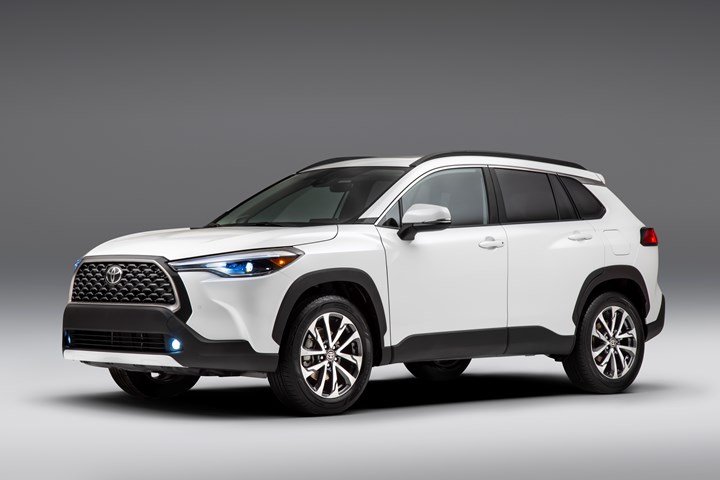
The crossover you need if you (a) drive a lot and (b) don’t particularly like visiting gas stations on a regular basis: the Toyota Corolla Cross Hybrid. (Image: Toyota)
One of the things that amuses me about announcements for new electric vehicles is the proclamation of what the expected range is before you need to get the vehicle charged.
So if one were to apply that sort of feature-metric to the 2023 Toyota Corolla Cross Hybrid—an electrified vehicle, as it has a lithium-ion battery and a 46-hp permanent magnet electric motor—Toyota would be able to boast of the highly competent hatch:
445 miles!
That’s right, someone could drive from Detroit to Fond du Lac, Wisconsin, on a single tank of gas thanks to the hybrid system that has an EPA-estimated fuel economy of 45 mpg city, 38 highway and 42 combined and the 10.2-gallon tank.
(Can you imagine buying anything but a large pickup and having a concern about the size of the gas tank? But that’s essentially what a key consideration is for EVs: how “big” the battery is.)
Comfort Level
The things about the Corolla Cross Hybrid that are most certainly important are that (1) it is a CUV that is based on the Corolla sedan, a car that traces its roots back to a vehicle introduced in Japan in 1966, so this is something that has a solid track record; (2) it has a hybrid powertrain that is produced by the company that has been continuously putting them into vehicles since 1997 (year of the first Prius in the Japan market).
In other words, it is the sort of thing that someone can buy and not have to feel fidgety about.
(While people who read on Automotive know, hybrids operate just like “regular” vehicles, and in the case of the Corolla Cross, with “regular” gas. So there is nothing out of the ordinary required to operate a hybrid. Not everyone reads on Automotive.)
What It Is
A point about a CUV, even a small(ish) one like this (it has a 103.9-inch wheelbase, is 176.8 inches long, 71.9 inches wide and 64.8 inches high) is that it should have the means to deliver on that U: utility.
And so to that end it should be noted that the vehicle offers 21.5 cubic feet of cargo room with the second row in place and 61.8 cubic feet when that is folded.
There is another aspect of utility that the vehicle comes standard with: all-wheel drive. Which is nice to have whatever climate you live in. (And especially for a good part of the year were you to be commuting between Detroit and Fond du Lac.)
As this is a vehicle primarily meant for commuting (as distinct from, say, joy riding, which seems to be the sort of activity that some car reviewers revel in, even though people who buy a vehicle (rather than a small fleet)), it is also worth noting that the vehicle is robustly equipped with active safety systems, such as pre-collision with pedestrian detection (you get warned, and if you don’t act, the Corolla Cross will by getting on the brakes), lane departure alert with steering assist (drift over the line and not react and the system will do so), automatic high beams (light when you need it and not when the on-coming vehicles don’t), and more.
And, of course, there is the Toyota Audio Multimedia System, which was designed an engineered by a team of Toyota engineers in Texas, which pretty much means that they understand what’s needed when driving from Detroit to. . .
///
Interesting Stat Proving Nothing
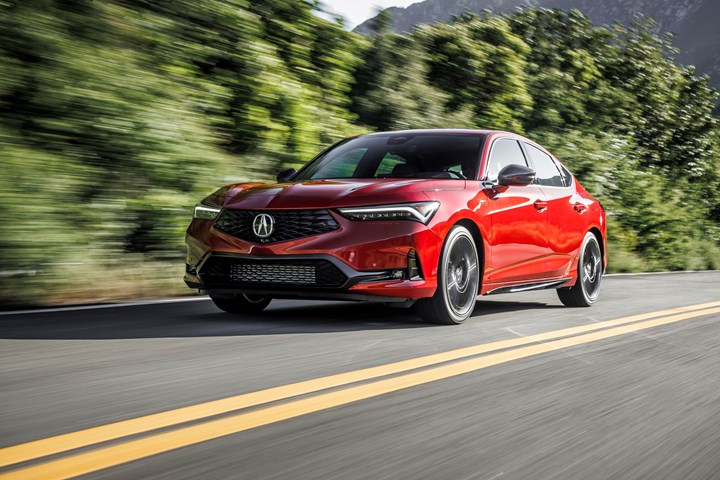
In the first three quarters of 2023 Acura sold 24,834 Integras (above). Cadillac has two sport sedans, the CT4 and the CT5. During the same period Cadillac sold 7,339 of the former and 14,397 of the latter, for a combined 21,736. Acura also sold 13,573 TLX models, so perhaps there is something to be said for sport sedans. (Image: Acura)
Through the third quarter of 2023 Cadillac, General Motors’ top brand from the standpoint of premium-ness, delivered 110,836 vehicles in the U.S.
During the same period, Acura, Honda Motors’ top brand, delivered 110,535 vehicles in the U.S.
A difference of 301 vehicles over nine months of sales.
Cadillac, of course, has pricier products than Acura.
The least-expensive Cadillac is the XT4, which starts at $37,895.
The least-expensive Acura is the Integra, which starts at $31,500.
Going in the other direction. . .
The most-expensive Cadillac is the Escalade, which starts at $80,795.
The most-expensive Acura is the MDX, which starts at $49,850.
Leverage
Getting to the 110,836 sales number took seven Cadillac models.
Acura got to its number with four.
Still, 301 units over nine months is interesting, if not informative.
///
BMW Plays Fortnite

BMW is paying attention to a younger demographic by setting up space in Fortnite. (Image: BMW)
One of the things OEMs need to do is to make themselves relevant and appealing to a younger demographic because, well, they have the potential to buy more vehicles than those who are more. . .vintage.
So BMW has announced that it is “the world’s first Car Creator in Fortnite.”
Presumably that means the “world’s first” in the physical world.
The OEM has created a city on the island “Hypnopolis.” Players are able to complete game challenges which then allows them access the Car Creator to, if the image above is any indication, do some wrenching on a BMW.
The vehicle they work on is the BMW iX2—an electric version of the second-generation of the coupe-styled crossover, the X2—which will have its public world premiere at the Japan Mobility Show 2023 in Tokyo, and which was revealed yesterday (which explains the photo at the bottom of this).
Stefan Ponikva, vp of BMW Brand Communication and Brand Experience:
“Our island in the online video game Fortnite opens up new dialogue opportunities with Next Gen target groups and brings the brand to life in the hands of players.”
Why Does This Matter?
Simple.
It is reported that Fortnite has 400-million registered players, of whom more than 60% are in that highly appealing 18- to 24-year-old demographic.
If a fraction of that player base has a good perception of BMW, Hypnopolis (which includes versions of BMW HQ, BMW Welt and the BMW Museum) will make a big difference in the company’s future fortunes.
And There’s This
While it might be thought by some (likely not in the 18-to-24 demographic) that playing video games is an idle waste of time, a recent study published in “Transportation Research Part F: Psychology and Behaviour” titled “Do action video games make safer drivers? The effects of video game experience on simulated driving performance” finds:
“action video game players had better driving performance and increased spare cognitive capacity compared to individuals who did not play AVGs and highlight a potential avenue for improving driver safety through video game use.”
Yes, games can help people become better drivers.
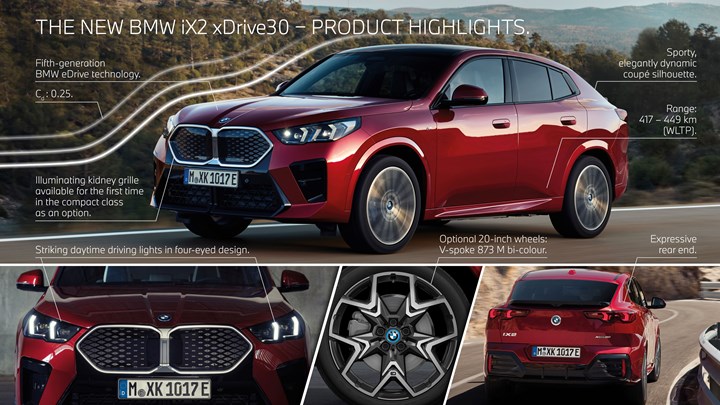
\\\
RELATED CONTENT
-
On Electric Pickups, Flying Taxis, and Auto Industry Transformation
Ford goes for vertical integration, DENSO and Honeywell take to the skies, how suppliers feel about their customers, how vehicle customers feel about shopping, and insights from a software exec
-
GAC, CATL Partner on Two Battery Ventures
Two new battery ventures are being formed in China by domestic carmaker Guangzhou Automobile Group Ltd. and battery giant Contemporary Amperex Technology Ltd.
-
On Fuel Cells, Battery Enclosures, and Lucid Air
A skateboard for fuel cells, building a better battery enclosure, what ADAS does, a big engine for boats, the curious case of lean production, what drivers think, and why Lucid is remarkable


.jpg;width=70;height=70;mode=crop)






